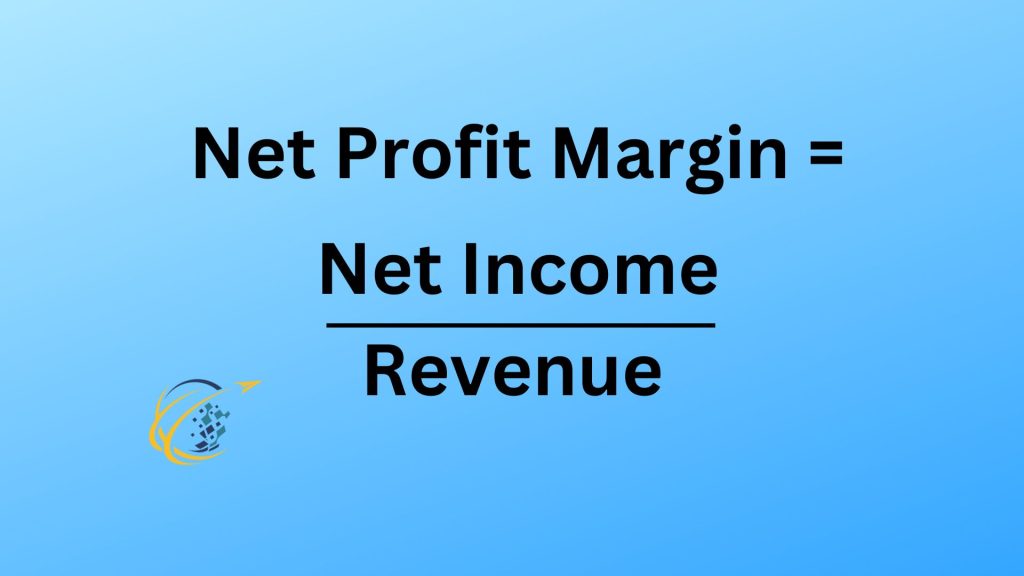
Net profit margin is an essential financial metric that gauges the profitability of a business. By calculating net profit margins, companies can determine the percentage of revenue that remains as profit after all operating expenses, interest, taxes, and other costs have been subtracted. This figure is crucial because it highlights the company’s ability to convert sales into profits, a key indicator of financial health and operational efficiency.
Moreover, net profit margin serves as a critical benchmark for comparing a company’s profitability over time or against industry peers. It provides insights into how effectively management is generating profit from sales and controlling expenses. As such, a higher net profit margin often indicates better control over costs and superior operational execution.
Additionally, this metric is instrumental for investors and creditors, as it offers a snapshot of the company’s earnings power. A stable or improving net profit margin suggests that the company is managing its cost base effectively, despite the challenges of market fluctuations or economic downturns. Therefore, understanding and monitoring net profit margin is vital for stakeholders to make informed financial and investment decisions.
Key Components of Net Profit Margin
Calculating net profit margins involves several key components, each playing a pivotal role in determining the final percentage. The primary component, revenue, represents the total amount of money that sales generate before deducting any expenses. Revenue establishes the baseline from which to subtract all costs and expenses.
Next, subtract the cost of goods sold (COGS) from revenue. COGS includes all direct costs related to the production of goods sold by a company. This subtraction yields the gross profit. For example, if a company earns $100,000 in sales and incurs $60,000 in COGS, the gross profit would be $40,000.
Furthermore, consider the operating expenses. These costs, including salaries, rent, and utilities, are part of running the business but do not directly relate to production. Subtracting these expenses from the gross profit provides the operating profit. For instance, if operating expenses amount to $20,000, the operating profit from the earlier example would reduce to $20,000.
Additionally, interest expenses on debts and taxes must be accounted for. These are subtracted after operating profit to arrive at the net profit. For example, if a company has $5,000 in interest expenses and pays $3,000 in taxes, the net profit from the operating profit of $20,000 would be $12,000.
Each component critically affects the net profit margin, illustrating how efficiently a company manages its costs and maximizes its revenue. The final net profit margin, expressed as a percentage, provides valuable insights into the company’s profitability and financial health.
Step-by-Step Calculation of Net Profit Margin
Calculating net profit margins is straightforward but requires careful attention to financial details. The formula used is:
Net Profit Margin equals (Net Income divided by Revenue) multiplied by 100 percent.
To begin, determine the net income, which is the revenue minus all expenses, including COGS, operating expenses, taxes, and interest. Revenue is the total income earned from sales before any deductions.
Consider a hypothetical business scenario: A company earns $200,000 in revenue. The cost of goods sold is $80,000, leading to a gross profit of $120,000. After accounting for $40,000 in operating expenses, the operating profit stands at $80,000. Subsequently, the company pays $10,000 in interest and $15,000 in taxes, reducing the net income to $55,000.
To find the net profit margin, apply the formula:
Net Profit Margin equals ($55,000 divided by $200,000) multiplied by 100 percent, which equals 27.5 percent.
This result indicates that 27.5% of the revenue is retained as profit after covering all expenses.
Additionally, this metric allows businesses to compare profitability over different periods or against competitors. For instance, if the margin increases, it suggests improved efficiency or cost management. Conversely, a decrease might signal rising costs or pricing issues, prompting strategic adjustments. Thus, understanding this calculation is crucial for financial analysis and strategic planning.
Analyzing Net Profit Margin Results
Analyzing net profit margin results requires an understanding of what constitutes a good margin, which varies significantly across different industries. For instance, technology and finance sectors often enjoy higher margins compared to retail or construction, where margins are typically thinner. When calculating net profit margins, it’s important to compare results against industry benchmarks to assess relative performance.
Furthermore, a detailed analysis of net profit margins can reveal insights into a company’s operational efficiency and pricing strategy. For example, a rising net profit margin over time may indicate that the company has successfully improved cost management or has implemented a premium pricing strategy that enhances profitability. Conversely, a declining margin could suggest rising costs, pricing pressure from competitors, or inefficiencies in operations.
Additionally, managers should consider external factors such as economic conditions or changes in industry regulations that might impact profit margins. This context helps in evaluating whether changes in net profit margins are due to internal company actions or broader market conditions.
In conclusion, while net profit margin is a crucial metric, it should be analyzed in conjunction with other financial indicators and operational metrics to provide a comprehensive view of a company’s financial health and strategic positioning. This holistic approach enables more informed decision-making and strategic planning.
Strategies to Improve Net Profit Margin
Improving net profit margins is a critical objective for any business seeking sustainable growth. One effective strategy is implementing cost-cutting measures that do not compromise the quality of products or services. For instance, streamlining supply chain processes can reduce material costs and improve efficiency. Additionally, automating routine tasks can lower labor costs while enhancing productivity.
When considering pricing strategies, businesses should conduct thorough market research to understand customer perceptions and competitor pricing. Accordingly, dynamic pricing strategies, such as offering promotions during off-peak periods or premium pricing for exclusive features, can maximize revenues without alienating customers. Moreover, adopting a value-based pricing approach, which focuses on the product’s worth to the customer rather than just the cost to produce it, can significantly boost margins.
Another crucial area is operational efficiency. By optimizing operations, companies can speed up production times, reduce waste, and improve service delivery. This involves regular reviews of operational processes and investing in technology that enhances output and quality. For example, upgrading to energy-efficient machinery not only reduces energy costs but also supports environmental sustainability—a growing concern among consumers.
In the context of calculating net profit margins, these strategies should be regularly evaluated for their effectiveness in improving profitability. It’s important to adjust tactics based on financial performance and market conditions, ensuring that the business remains competitive and profitable over the long term. This proactive approach will help maintain high standards and foster continuous improvement, key components of enduring business success.
Conclusion
In conclusion, understanding and improving net profit margins are crucial for any business aiming for long-term success and sustainability. By adopting strategic cost management, innovative pricing strategies, and enhancing operational efficiency, businesses can improve their profitability while maintaining the quality of their offerings. Regularly analyzing these metrics and adapting to market conditions and internal efficiencies will enable companies to navigate challenges effectively and seize growth opportunities. Ultimately, maintaining a focus on both the financial health and the value delivered to customers is essential for sustaining competitive advantage and achieving enduring success.



